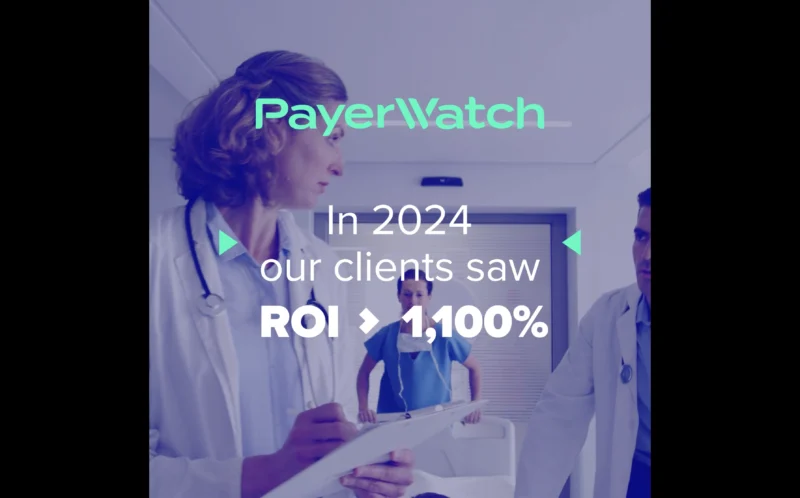Securing Healthcare’s Frontlines: Designing Spaces That Save Lives
Healthcare security: It’s not just complex, it’s critical.
The rapid growth, consolidation, and operational intricacies of hospitals and medical centers create unparalleled challenges. From managing expansive facilities to securing sensitive patient areas while ensuring seamless daily operations, it’s a constant balancing act. In this episode of Innovation Obsessed, Grace Pluta from Oosto moderates a timely conversation with Lou Martin and Bill Gable from NextGen Security, who share their frontline experience securing healthcare facilities across the East Mid-Atlantic. They’re joined by Nate Snyder from Oosto, offering a technology-driven perspective on how AI and analytics are reshaping healthcare security today.
The Challenge: Constant Change in Complex Environments
Lou Martin captures the core tension in healthcare security today:
“The constant change in healthcare facilities means security teams have to be just as adaptable. Staffing, patient flow, and facility consolidation create unique challenges that require both smart technology and seamless operations.”
Hospitals are not static buildings—they are living, breathing ecosystems. Between mergers, expansions, and shifting care models, security systems must be flexible and scalable. Lou’s frontline perspective comes from managing operations across a diverse and growing hospital network where every facility has different security needs and legacy systems. Without adaptability, gaps emerge that can threaten safety and operational continuity. Bill Gable highlights the nuance around privacy and safety:
“You can’t just bolt on security devices. Placement matters, especially where privacy is involved—like in emergency rooms or operating theaters. It’s about building trust and safety without disruption.”
Protecting sensitive patient areas creates challenges that few other industries have. Cameras and access controls must follow strict health rules like HIPAA, so where devices are placed and how data is handled requires extra care. Bill’s experience shows that security systems need to be carefully designed to support staff and patients—not make them feel uncomfortable or get in the way. Doing More with Less: AI as a Force Multiplier Healthcare staffing shortages and burnout are well documented. A recent survey found that over 60% of nurses have considered leaving their profession due to workplace violence and stress.
In this context, Nate Snyder explains how AI technology can shoulder some of the security burden so healthcare’s frontlines workers can focus on what matters most—care:
“AI can sometimes take on the jobs of multiple people so healthcare workers can focus on care—not on watching over their shoulder. It’s about protecting people while making their lives easier.”
From facial recognition that verifies identities at secured access points to real-time alerts about suspicious behaviors, hospitals are using Vision AI to enable their security teams to be more efficient and proactive, without adding friction to daily operations.
Practical Solutions Making a Difference
Bill emphasizes the importance of cohesion between security and hospital operations:
“You can’t just install technology and walk away. It’s about working closely with clinical staff, facilities teams, and security leadership to create standards that everyone understands and trusts.”
Successful healthcare security programs are holistic, blending technology with policy and training. Establishing clear protocols ensures that when an alert happens, every team member knows their role—minimizing response times and maximizing safety.
Balancing Security and Patient Experience
Healthcare facilities operate 24/7 with thousands of visitors and staff passing through every day.
Lou notes:
“It’s a balance of convenience and safety—making sure patients and authorized staff can move freely while keeping bad actors out.”
Nate points out how technology can reduce friction:
“A doctor scrubbed in for surgery shouldn’t have to fumble with a badge. Facial recognition and smart authentication provide secure access without interrupting care.”
Anticipating Threats Before They Happen
Violence, insider threats, and unauthorized access remain critical risks for healthcare security teams.
Nate shares:
“It’s not just about reacting to threats, it’s about anticipating them—and responding in ways that protect everyone.”
By using predictive analytics and behavior-based alerts, hospitals can reduce response times and intervene before incidents escalate.
The Path Forward: Adaptable, Layered Security for Healthcare
As healthcare’s frontlines continue to evolve, leaders must embrace adaptable, layered security strategies that combine technology with people and process. Lou concludes:
“Protecting healthcare facilities isn’t just about safeguarding assets or profits—it’s about protecting people’s lives.”
This episode offers a blueprint for hospitals looking to modernize their security operations—blending operational expertise with AI-powered technology to create safer, more resilient healthcare spaces.




